Transfer RNA (A-level Biology)
Transfer RNA
The Role of tRNA
Structure and Role of tRNA
- tRNA is single stranded. Like mRNA, tRNA is a single strand with the bases U, A, C, and G.
- tRNA is a cloverleaf shape. tRNA has a slightly different structure to mRNA. The single strand of tRNA is folded up into a cloverleaf shape.
- tRNA has two attachment sites. At one end of tRNA, there is an attachment site for amino acids. At the opposite end of tRNA, there is an attachment site for anti-codons. We will explore this in more detail later.
- tRNA carries amino acids. We’ve seen that tRNA has attachment site for amino acids. During the process of translation, tRNA carries and transfers these amino acids to ribosomes.
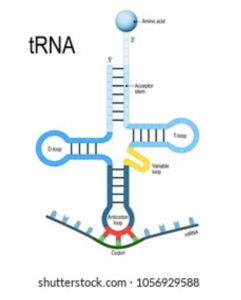
Fig X: The structure of tRNA. This is a free to use stock image – can this be re-made?
Translation of mRNA
Complementary tRNA
During translation, mRNA docks at the ribosomes. The ribosomes read the codons on the mRNA and brings tRNAs with the complementary codon. For example, if the codon on the mRNA is “AUG”, the ribosome will bring a tRNA that has an anti-codon which reads “UAC” (which codes for the amino acid methionine).
Steps of Translation
1. mRNA binds to the ribosome. mRNA binds to the ribosome. This binding is helped by the 5’ cap of the mRNA, which the ribosomes recognise and bind to. The poly-A tail of the mRNA also binds to the ribosome in order to increase translational efficiency.
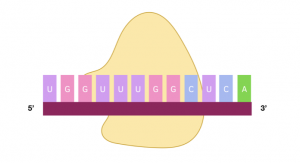
2. The ribosome reads the first codons. The ribosome reads the codons on the mRNA, beginning with the start codon “AUG”.
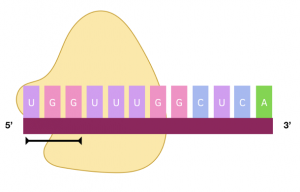
3. A tRNA will bring the complementary amino acid for the first codon. Amino acids are found in the cytoplasm. Each specific tRNA has a complementary amino acid, and can bring it over. This is an ATP driven process (it requires the hydrolysis of ATP). As the start codon is “AUG”, the first amino acid will be methionine, brought by a tRNA with the anti-codon “UAC”.
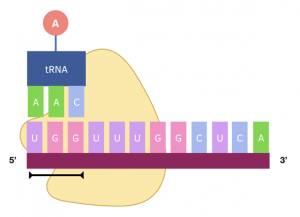
4. Another tRNA brings the second amino acid. The ribosome continues to read the next codon, and another tRNA brings the correct amino acid.
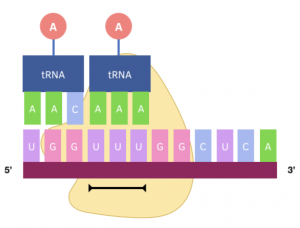
5. The first tRNA leaves. The first tRNA is then released from the ribosome, and the second tRNA takes its place. This process is repeated for each codon that the ribosome reads.
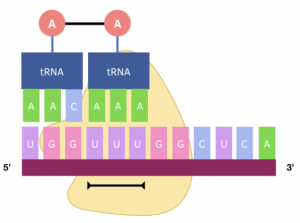
6. A peptide bond forms. A peptide bond forms between the two amino acids. An enzyme called aminoacyl transferase catalyses this.
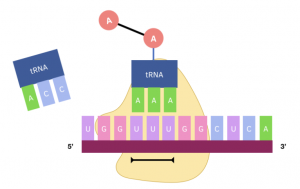
7. The process continues until a stop codon is reached. Ribosomes continue this process until they reach a stop codon on the mRNA. Stop codons are either “UAA”, “UGA”, or “UAG”. tRNAs do not have anti-codons for stop codons. Once the ribosome recognises the stop codon, a terminating factor catalyses the hydrolysis of the bonds between the final tRNA and the amino acid chain, which then releases the polypeptide chain.
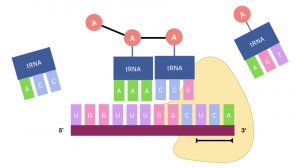
8. After translation, the polypeptide chains are folded. This folding is a spontaneous process but is also guided along by specialised proteins.
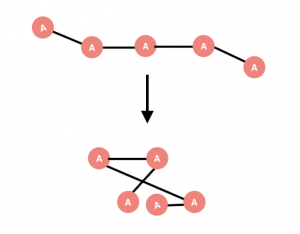
9. Polypeptides can also undergo post-translational modifications. Modifications can occur. For example, carbohydrate chains can be added onto proteins, depending on the type of protein and its function. Also, all polypeptide chains start with methionine, but in some proteins this starting methionine can be cleaved off following translation.
10. Proteins destined to leave the cell go to the rough ER. Proteins that need to be secreted from the cell are translated and folded in the rough endoplasmic reticulum. Ribosomes can recognise if a protein is meant to be secreted. If this is the case, the ribosomes will attach themselves to the rough endoplasmic reticulum, and the translated polypeptide chain will be released into the lumen of the endoplasmic reticulum where it will be folded and packaged for secretion and sent to the Golgi apparatus.
11. Proteins destined to stay in the cell go to the cytoplasm. Proteins meant for use inside of the cell are synthesised and released into the cytoplasm.
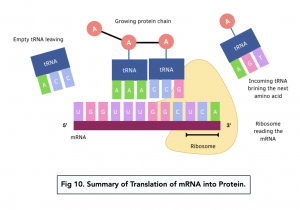
Transfer RNA (tRNA) is a small RNA molecule that acts as a bridge between the genetic information in DNA and the process of protein synthesis. tRNA carries specific amino acids to the ribosome, where they are linked together to form a protein.
During protein synthesis, the ribosome reads the genetic information from messenger RNA (mRNA) and uses this information to synthesize a protein. tRNA acts as a courier, bringing the correct amino acid to the ribosome based on the codon (sequence of three nucleotides) on the mRNA. The ribosome then covalently links the amino acids together to form a protein chain.
There are 20 different types of tRNA in cells, each carrying a specific amino acid. The specific pairing of codons on mRNA and the corresponding amino acids carried by tRNA ensures that the correct amino acid is added to the growing protein chain.
tRNA molecules have a characteristic cloverleaf shape and are composed of a single strand of RNA with several loop structures. The loops contain specific sequences of nucleotides that are important for tRNA function, including the anticodon, which pairs with a codon on mRNA during protein synthesis.
tRNA molecules are processed from longer precursor RNA molecules in the nucleus by a series of enzymatic cleavage and modification reactions. This processing is necessary for the correct function of tRNA in protein synthesis.
Mutations in the genes encoding tRNA can lead to genetic diseases. For example, mutations in tRNA genes can cause a failure in the correct modification of tRNA, leading to a decrease in the efficiency of protein synthesis and ultimately resulting in disease.
tRNA plays a role in the evolution of species through its contribution to the genetic code. Changes in the genetic code can lead to the creation of new amino acids and the evolution of novel proteins with new functions. This can ultimately contribute to the evolution of species and the development of new traits.





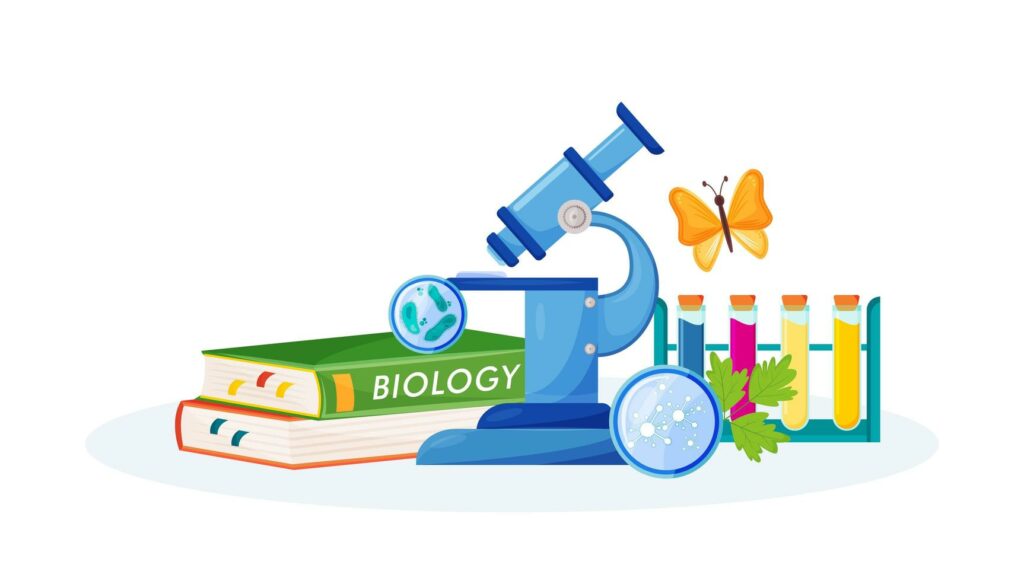
Still got a question? Leave a comment
Leave a comment